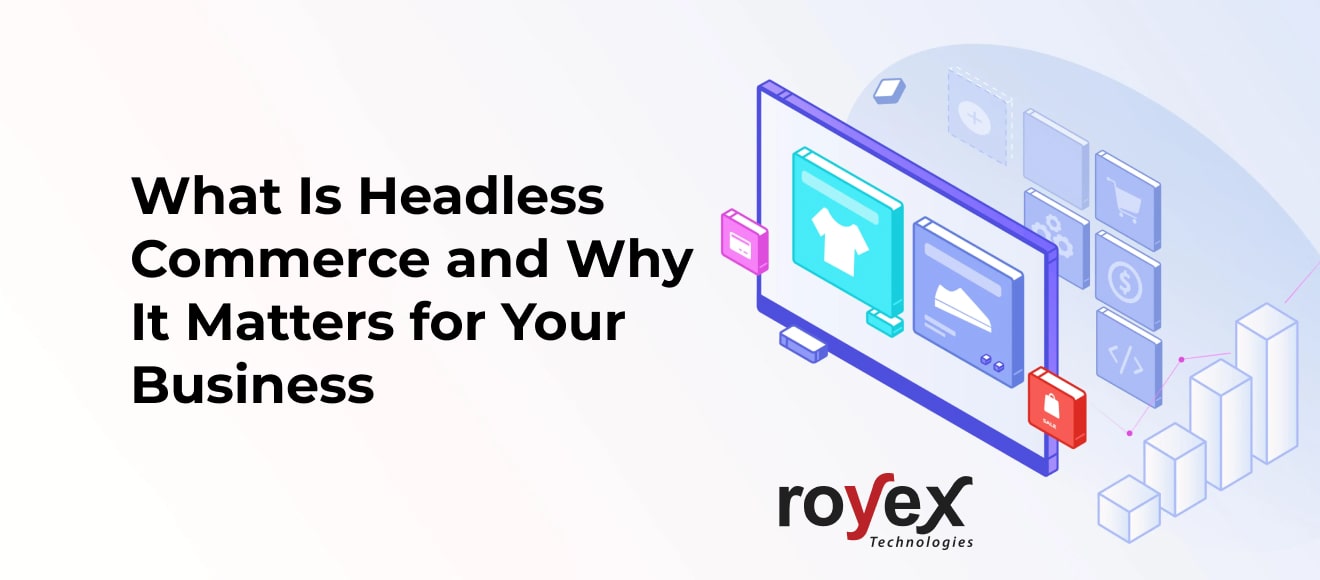
What Is Headless Commerce and Why It Matters for Your Business
Lately, the ecommerce field has seen big changes, largely due to the rise of headless commerce. This new method of online sales is changing the way businesses create and run their online stores by offering unmatched adaptability and personalization. But what is headless commerce and why is it significant for your business ?
The adoption of headless commerce is accelerating rapidly, with the global headless CMS market expected to grow from $3.8 billion in 2023 to $12.9 billion by 2028, at a CAGR of 27.7%. This growth is driven by increasing demand for omni-channel experiences and greater e-commerce flexibility.
Headless commerce usage has noticeable benefits for companies. By 2025, the use of such systems is anticipated to improve site loading speeds by 25% compared to older systems. By 2026, projections suggest that 80% of online commerce businesses will favor headless systems to establish smooth user experiences across the web, mobile apps, and social media. This may boost customer involvement by 30% and raise sales conversion rates by 20%.
Diving deeper, it is clear that headless commerce technology marks a significant change in online business. It is important to understand its effects to keep up with the changing digital market. This article gives insights on what headless commerce is, its advantages, and why it's becoming crucial for businesses of all sizes.
What Is Headless Commerce and How It Works?

Headless commerce refers to an e-commerce architecture where the front-end (the "head") of your online store is separated from the back-end commerce functionality. In traditional e-commerce platforms, the front-end and back-end are tightly integrated, meaning changes to one can significantly impact the other. Headless commerce, however, separates these two components, allowing them to function independently, and for greater flexibility by using APIs to connect the two layers.
Headless commerce works by separating the front-end presentation layer from the back-end e-commerce functionality. The basic design of headless commerce includes a secure backend responsible for key e-commerce tasks like managing inventory, orders and customer records. The backend interacts with different frontend apps (websites, mobile apps, IoT devices, etc.) using APIs (Application Programming Interfaces). When a client engages a frontend app, it sends requests to the backend via these APIs. The backend processes these requests and responds with the relevant data, which the frontend presents to the client in an understandable way. This split structure lets companies customize client experiences across various platforms while keeping a single, central system for central e-commerce operations. It also allows for quicker updates to the user interface without impacting backend operations, and the other way around, offering better adaptability and scalability for companies.
Key components of headless commerce:
Back-End: It comprises all the business rules and functions linked to ecommerce activities. These include the ecommerce engine, product details, inventory control, order execution systems, and customer relations management (CRM). These functions autonomously and connects with the frontend via APIs (Application Programming Interfaces).
APIs: Application Programming Interfaces act as the connectors between the back-end and various front-end experiences.
Front-End: This includes the user interface (UI) and user experience (UX) components, such as the website design, layout, and interaction elements. In a headless setup, the front-end can be built using any technology or framework, such as React, Vue.js, or Angular.
Why Headless Commerce Matters for Your Business

Here are the benefits of headless commerce for your business:
Enhanced Flexibility and Customization
Headless commerce lets companies make one of a kind experiences across various points of contact. This is possible without the restrictions of a single big e-commerce platform. As the front end is separate from the back end, developers are free to create captivating user experiences that reflect their brand's image. The adaptability allows for the addition of new technologies, including Progressive Web Apps (PWAs) or mobile inclined designs, without meddling with backend procedures. This aids firms in quickly adjusting to shifts in client tastes and market movements.
Operational Efficiency
Headless commerce makes development processes easier and quicker, which means changes can be made faster. This saves money and makes operations more nimble. Your team can put their energy into creating new ideas and important projects, rather than dealing with technical problems and upkeep work.
Improved Performance and Speed
Headless commerce accelerates page load times and boosts overall performance by separating the frontend from the backend. This is vital to stay competitive in a rapidly moving digital environment, where a slight in page load time can heavily affect conversion rates.
Enhanced Omnichannel Experience
Headless commerce simplifies providing steady experiences through different channels and devices. This applies whether customers shop on a website, mobile app, social media, or voice assistant. Businesses can boost customer happiness and loyalty by ensuring an uninterrupted and coherent brand experience.
Future-Proofing Your Business
Headless commerce enables companies to easily incorporate emerging technologies and platforms. Businesses can do this without having to redo their whole e-commerce structure. This flexibility is crucial to keep pace in a constantly digital market.
Improved Developer Experience
Headless commerce allows developers to use the tools and frameworks they prefer for frontend development. This can boost developer efficiency, speed up the release of new features, and simplify the hiring of highly skilled professionals.
Better Content Management
Headless commerce lets companies conveniently merge their content management systems (CMS) with their online trading platform. It promotes a more interactive and custom content experience that can noticeably improve customer involvement and conversion rates.
Improved Performance and Scalability
Separating the front-end and back-end allows each component to be optimized independently for better performance. For example, the front-end can be tailored for speed and responsiveness, ensuring a smooth user experience even during peak traffic times. Additionally, businesses can scale their operations more effectively by leveraging microservices architecture on the back-end, allowing for incremental improvements and expansions.
Challenges of Implementing Headless Commerce
While the benefits of headless commerce are substantial, it's important to consider potential challenges:
Initial Complexity: Setting up a headless architecture can be more complex than implementing a traditional e-commerce platform.
Resource Requirements: Headless commerce may require more specialized technical expertise and potentially higher initial development costs.
Maintenance: Managing multiple systems and ensuring they work together seamlessly can be more challenging than maintaining a single, integrated platform.
Getting Started with Headless Commerce
If you're considering adopting headless commerce for your business, here are some steps to get started:
Assess Your Current Setup: Evaluate your existing e-commerce infrastructure and identify areas where a headless approach could provide the most benefit.
Define Your Goals: Clearly outline what you hope to achieve with headless commerce, whether it's improved performance, better omnichannel capabilities, or enhanced customization.
Choose Your Technology Stack: Select the right combination of back-end systems, APIs, and front-end technologies that align with your business needs and technical capabilities.
Start Small: Consider implementing headless commerce for a specific channel or product line before rolling it out across your entire business.
Partner with Experts: Work with experienced developers and solutions providers who understand the intricacies of headless commerce implementation.
Conclusion
Headless commerce marks a major change in ecommerce, providing companies with unparalleled adjustability, ability to scale, and smooth multichannel experiences. Despite certain problems, the positive aspects make it an appealing choice for businesses striving to keep up in the digital era. By using headless commerce, firms can adjust rapidly to consumer trends and tech progress, which aids in achieving consistent success in the constantly online retail industry.
As you consider the future of your e-commerce strategy, headless commerce should be a key consideration. It can boost customer experiences, increase performance, and give more agility. This might be the edge your business needs to succeed in the online market.
Established in 2013, Royex Technologies is a leading E-Commerce Web Design Company in Dubai that provides innovative solutions for small, medium, and large-scale companies. We specialize in responsive web development, mobile app development, CRM integration, AI solutions for website & mobile applications, and many more. Our extensive experience in mobile app development will help you to take your business to a high level.
Check our portfolio to see our previous works. Contact us via email at info@royex.net or call us at +971566027916 to get started with us.




